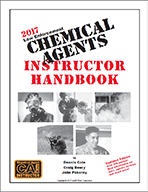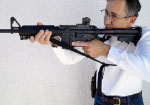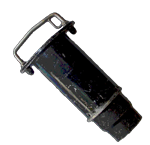In the industry of providing non and less-lethal alternatives to law enforcement there is a constant controversy over the terms non-lethal, less-lethal and less-than-lethal. Can we bring this to a close? Not as long as there are marketing campaigns and competition between companies in private industry and the government avoiding the regulations. Depending upon which companies you are dealing with the terms mean something quite different. The Army defines it one way and major pundits from the law enforcement community label another way.
The truth is you must evaluate the product you are going to use and decide for yourself what the truth is. I suggest that you never believe any manufacturer’s claims. Remember, each manufacturer is trying to get your business. If that means twisting the facts or interpreting the facts to fit their product they will. You must ask the salesman questions based on your own knowledge of the products and your experience using force. 
That knowledge should be a combination of:
- Kinetics, how hard an object will impact a suspect
- Electronics, how much voltage and/or amperage a human body can take,
- Court decisions, there are many recent decisions restricting or defining the use of force, and
- Chemical agents, what are the characteristics of each chemical you are considering using.
If you are armed with that knowledge you can make informed decisions and not have to rely on someone else’s version of the truth. This ability will become very important to you when you are defending yourself in court. When sitting in front of a jury and your only response to a question is that the manufacturer told me that it wouldn’t hurt anyone; you may be very embarrassed if you relied on his word.
Generally you can use these terms to describe the level of injury a tool is designed for.
- Non-lethal is a device that does not have the potential to kill anyone if properly deployed. The percentage of fatal outcome is practically non-existent and the percentage of serious injury is very low.
- Less-lethal is a device that is designed to not kill anyone if properly deployed but does have the potential to cause serious injury or death. The percentage of a fatal outcome is low but the percentage of serious injury is high.
- Less-Than-Lethal is a confusing term meaning the same thing as Less-lethal.
The U.S. Military have authored their own definition of non-lethal. They don’t make a distinction between less-lethal and non-lethal. The military has a different mission than law enforcement. When the military takes an action a certain percentage of casualties are acceptable. When law enforcement undertakes an action no casualties are acceptable. That doesn’t mean we will not use deadly force when it is justified. It just means we can’t start with the idea that a certain percentage of our forces or suspects will become casualties.
Manufacturers of impact munitions such as bean bags, sponge munitions, etc. will tell you that “non-lethal” is a myth. They will tell you, in an effort to promote their own products, that everything can be lethal so how can you have a “non-lethal” product. As in every lie a little truth goes a long way. Their little truth is that anything has the possibility that it may be used to kill someone. The pen in your uniform pocket, your baton, your clip board, all could be used to kill someone but we don’t refer them as less-lethal. The lie is that there is nothing out there that is non-lethal. Will a suspect one day die from exposure to a “non-lethal” product? The answer is certainly, yes. Does that make it less-lethal? The answer is certainly, no.
Non-lethal products are designed to be just that, non-lethal. An anomaly will certainly happen one day. The anomaly will be a suspect with a malady that we cannot predict, an anaphylactic reaction to OC with no Atropine on the scene to help or a purposeful misuse of a low impact projectile by a policeman.
On the other hand, using less-lethal projectiles you will eventually cause serious injury or death. It has already occurred in many jurisdictions on many occasions. That’s why it is termed less-lethal. Although we don’t want a suspect to die at our hands it may happen.
Force, by any name, should not be applied unless it is reasonable and necessary for the circumstances surrounding its use. The least amount of injury we inflict on a suspect in stopping his illegal actions is the preferable alternative we should choose. Make that choice through an informed decision on your part.





